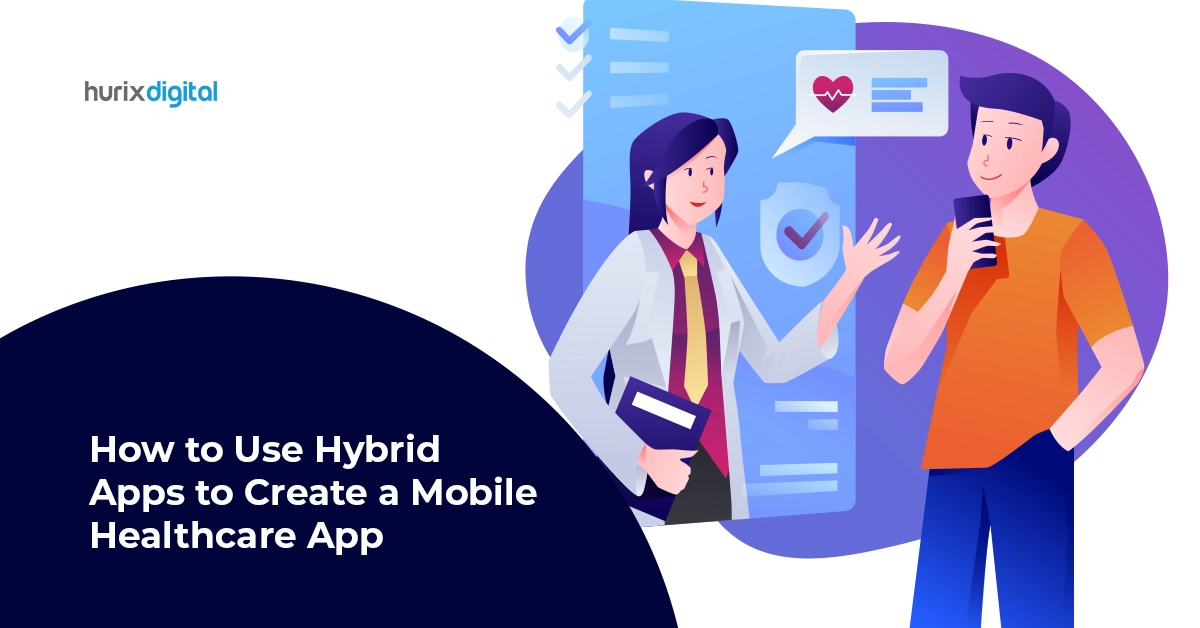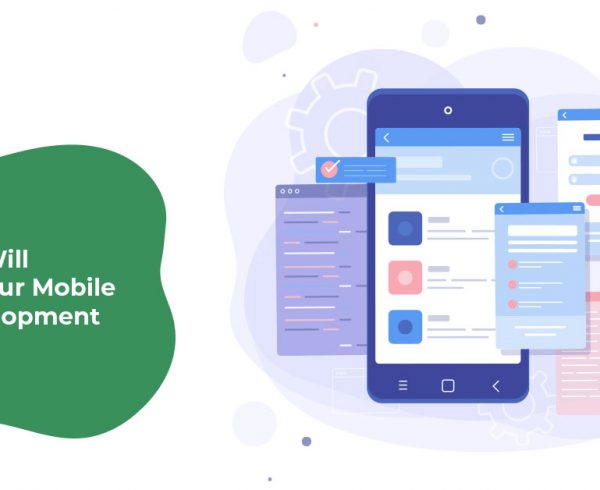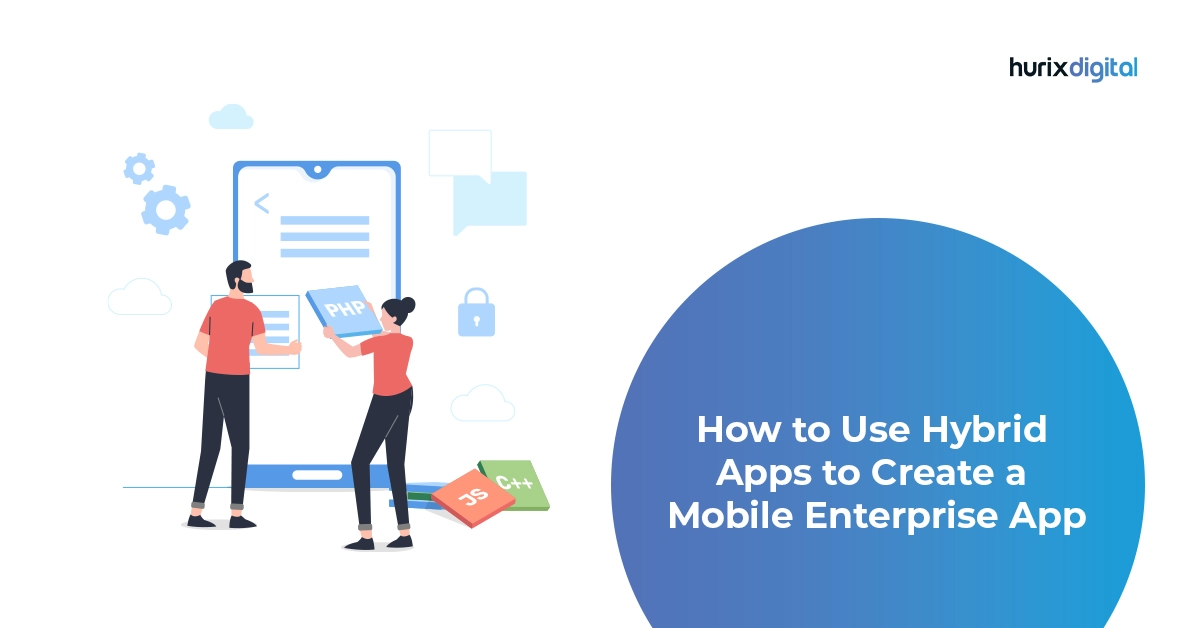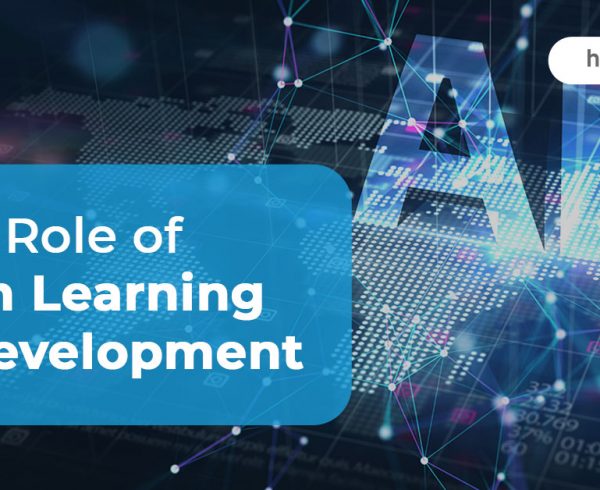Summary
This blog post provides a comprehensive overview of the benefits of using hybrid apps for mobile healthcare app development. It also provided a step by step guide for creating a hybrid app.
Exploring the realm of mobile health demands strategic thinking and forward-looking approaches. Among the plethora of choices in app development, hybrid applications emerge as a compelling solution for the healthcare industry in today’s landscape.
Creating a mobile healthcare app using hybrid app development offers a unique blend of versatility, efficiency, and broad reach. Also, it simplifies the complexities of reaching users across different platforms.
Studies show that the mobile health market is expected to exceed 300 billion U.S. dollars by 2025. The growing popularity and applications of mobile healthcare apps highlight the increasing significance of digital solutions in improving the delivery of healthcare services.
In this post, we will explore how to use hybrid apps when it comes to creating revolutionary mobile healthcare apps.
Table of Contents:
- Why Use Hybrid Apps for Healthcare App Development?
- A Step-by-Step Guide to Hybrid Healthcare App Development
- Understand the Requirements of a Healthcare App
- Choose a Hybrid Framework
- Set Up the Development Environment
- Design the User Interface
- Implement Core Functionality in the App
- Integrate APIs and Backend Services
- Test and Optimize of the App
- Deploy Your Healthcare App
- Maintain, Update, and Train Users on Your App
- Gather Feedback and Iterate
- Wrapping Up
Why Use Hybrid Apps for Healthcare App Development?
Using hybrid apps for mobile healthcare app development offers several advantages, making them a viable choice for many developers and healthcare organizations.
Following are the top three reasons hybrid apps are often chosen for mobile healthcare app development:
1. Cross-Platform Compatibility
Hybrid apps allow developers to write code once and deploy it on multiple platforms (iOS and Android). This significantly reduces mobile application development time and effort compared to building separate native apps for each platform.
2. Faster Development of the App
Hybrid frameworks like React Native and Flutter enable faster development through hot reloading, allowing developers to see instant changes during the coding process.
3. Cost-Effectiveness
Building a hybrid app is often more cost-effective than developing separate native apps for each platform. Development teams can share resources, including developers and code, between iOS and Android projects.
Also Read: 6 Expert Tips for Creating a Unique and Successful Mobile App
A Step-by-Step Guide to Hybrid Healthcare App Development
Creating a healthcare app using hybrid technology involves using frameworks that allow you to build applications that can run on multiple platforms, such as iOS and Android, with a single codebase.
Hybrid app development combines elements of both native and web applications. This way, it offers flexibility and efficiency to the developers in the long run.
Here’s a general step-by-step process on how to use hybrid apps for developing a mobile healthcare app:
1. Understand the Requirements of a Healthcare App
Clearly outline the features your healthcare app needs. This may include appointment scheduling, electronic health record (EHR) management, telehealth capabilities, medication tracking, and more.
Be aware of healthcare regulations and compliance requirements, such as HIPAA, in the United States, and design your app to meet these standards.
2. Choose a Hybrid Framework
Popular hybrid frameworks for hybrid app development include React Native, Flutter, etc. Choose a framework based on your team’s expertise, project requirements, and desired user experience.
- React Native: Uses JavaScript and React. It is well-suited for apps with a strong emphasis on the user interface.
- Flutter: Uses Dart programming language. Known for its expressive UI and quick development.
3. Set Up the Development Environment
Install the necessary software and tools, such as Node.js and npm for React Native, Dart, and Flutter SDK for Flutter or Visual Studio.
Also, set up development environments for iOS and Android app development using Xcode and Android Studio. This step allows developers to write, test, and debug code effectively and ensure the compatibility and performance of the healthcare app on both platforms.
4. Design the User Interface
Wireframes serve as a blueprint for the app, helping stakeholders to conceptualize the layout and functionality of each screen. Use tools like Sketch or Adobe XD to create static wireframes.
Prototypes are interactive, clickable representations of the app that simulate user interactions and transitions between screens. Once wireframes are approved, convert them into prototypes using tools like InVision, Figma, or Proto.io.
5. Implement Core Functionality in the App
Ensure secure access to the healthcare app by implementing robust user authentication. OAuth (Open Authorization) is a widely used authentication framework. It allows users to grant limited access to resources without exposing their credentials.
Also, design user-friendly forms for capturing patient details, medical history, medications, and other relevant information.
6. Integrate APIs and Backend Services
Connect to healthcare data exchange APIs to facilitate the secure and compliant sharing of medical information between different systems or healthcare providers.
Also, select a backend service that prioritizes data security, ensuring that patient information is stored and managed in compliance with healthcare regulations.
7. Test and Optimize of the App
Perform unit testing, integration testing, and user acceptance testing. Furthermore, test on various devices and screen sizes to ensure a consistent user experience. Optimize the app’s performance for speed and responsiveness and make sure that the app complies with healthcare industry regulations and standards.
8. Deploy Your Healthcare App
Ensure your healthcare app complies with Apple’s and Google Play’s Developer Program guidelines regarding content and user experience before submission.
Focus on creating an engaging and informative app description that highlights key features and benefits. Also, include relevant keywords to improve discoverability. Don’t forget to include eye-catching screenshots that showcase the app’s visuals and an app preview video for a dynamic demonstration.
9. Maintain, Update, and Train Users on Your App
Regularly update the app to fix bugs, improve performance, and introduce new features. Monitor user feedback and address issues promptly. Also, provide user guides, tutorials, or in-app tooltips to help users navigate the app. If the app involves healthcare professionals, offer training sessions to ensure they can use the app effectively.
10. Gather Feedback and Iterate
Collect user feedback through app reviews, surveys, or direct communication. Use this feedback to iterate on the app, addressing user concerns and continuously improving the user experience.
Also Read: Different Types of Mobile Applications: Native, Hybrid & Web Apps
Wrapping Up
Healthcare apps deal with sensitive information, so security and compliance should be top priorities throughout the development process. It’s also crucial to involve healthcare professionals in the design and testing phases to ensure the app meets the needs of both users and industry regulations.
In this context, note that you can transform your vision into reality with Hurix Digital’s custom Mobile Application Solutions. We’ll work with you to make sure your app does exactly what it needs to do while also nailing all those technical requirements.
Contact us today to know more!










